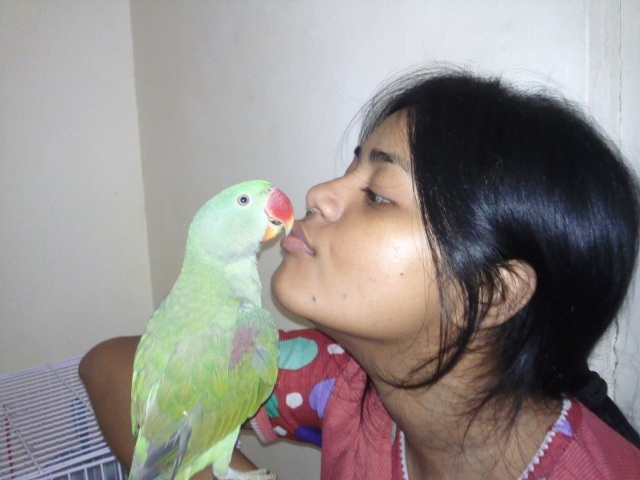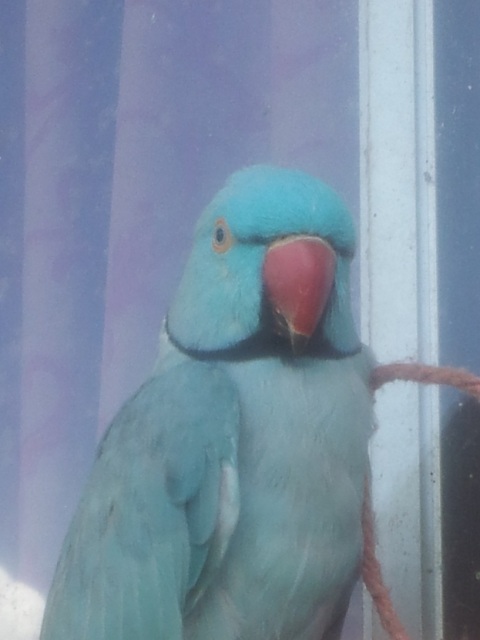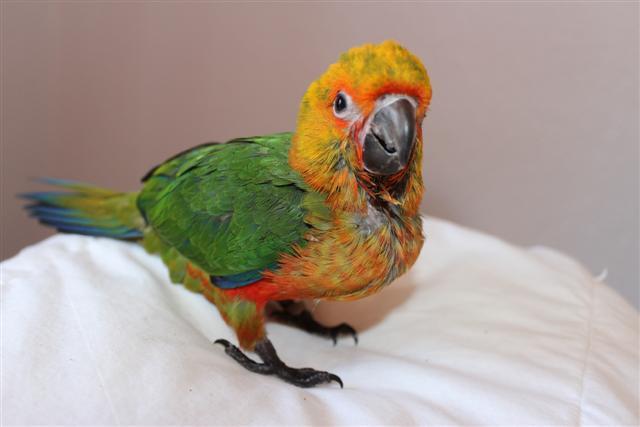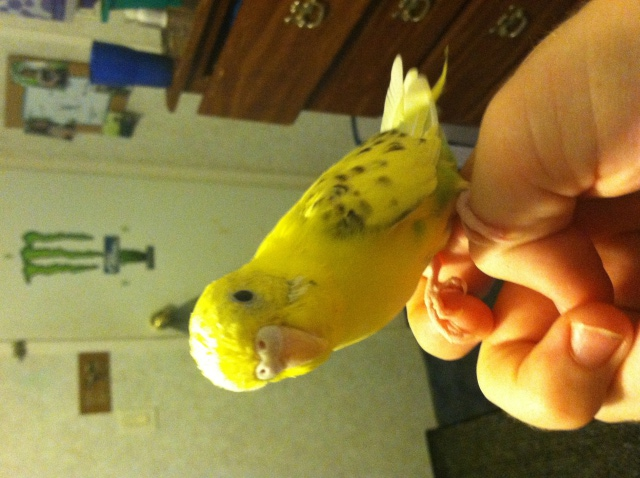QuestionDear Chrys,
HELP! I have a Pied Recessive budgie that was sold to me as a female, but on a breeders website it was said to be a male. Then a local amatuer breeder told me it was a girl. Buttons (the budgie) gets bullied a lot by my other budgie (a cock), and is a lot more reserved and less highly strung than Basil (the cock). They sing differently, Buttons being a lot more quiet and more likely to chirp than to screech. Buttons cere is pinky/brown with the tiniest tinge of blue. I want to have two pairs but I don't know whether to get a cock and a hen or two hens.
Thanks, Rohan
AnswerHi, Rohan. Thanks for posting your questions.
The age of parakeets/budgie's play a lot into how easily they can be sexed visually. For best accuracy, the birds should be adults. Recessive pied budgie's (as well as other color combinations) are difficult to sex visually (unless you know the coloration of their parents, grandparents). To be 100% certain of the sex of Buttons, you should have s/he DNA sexed. This is done by taking a blood sample by clipping a toenail a little short until it bleeds, then placing a couple drops of this blood on a DNA sexing "card" and submitting it to a Lab for sexing. This process costs $20 and takes about a week to get the results once the Lab receives the sample. The testing packets are free for the asking. Parrots can also be sexed by submitting a blood feather instead clipping a toenail for a blood sample. Here is the website for the Lab I use: http://www.avianbiotech.com/Index.htm
I'm not even going to try to predict what sex Buttons is from the description you provided. However, I will give you some general hints about the behavior of parakeets/budgies. Although males appear to be more "highly strung" and "bullies", when it comes right down to it, females are more aggressive than males. This is because it's their "job" to guard the inside of a nestbox and the eggs/babies against any intruder that would get past the male, who guards the outside of the nestbox. Females bite harder than males for this same reason. Females will fight another female to their death if necessary during squabbles. Males "sing" and "strut their stuff" towards other birds, whereas females mainly chirp, if they are verbal at all.
In normal colored keets/budgies (not color combinations, like pieds, etc.), male's ceres are blue, they are blue from where they meet the side of the face all the way across. A female's cere can be blue, but it will be white around the edges where the cere meets the side of the face. Male's ceres also seem to be fuller and brighter blue. Female's ceres can be any other color, particularly brown/tan. When a female is in breeding condition (not necessarily of breeding age), her cere will turn dark brown and be crusty looking.
If you don't want to DNA sex Buttons, another alternative you have is to put Buttons in with other keets/budgies of known sex, and see whether s/he bonds (takes a liking to) and/or see how she behaves with other/another bird(s). If she bonds with a male, she's likely a female. If she bonds with a female, she's likely a male. Otherwise, you should contact an expert keet/budgie breeder or an avian vet for assistance.
I've been breeding keets/budgies for 16 years, and I get fooled sometimes about the sex of some color mutations. I had one I thought was a male that laid eggs 2 years ago! Boy was I fooled!
Sorry I couldn't be of more help.
Chrys

 can i give my parrot chole(chana) called in hindi
Question
my little chaddi alexa
dear sir,
can give chan
can i give my parrot chole(chana) called in hindi
Question
my little chaddi alexa
dear sir,
can give chan
 RE: Indian Ringneck probems
Question
Indy our Ringneck
Thank you for your he
RE: Indian Ringneck probems
Question
Indy our Ringneck
Thank you for your he
 ID Birds
Question
Panama Birds
My uncle served in Panama in 1941
ID Birds
Question
Panama Birds
My uncle served in Panama in 1941
 Jenday Conure Weaning?
Question
Castor the Conure
Hi
I have a 9 week o
Jenday Conure Weaning?
Question
Castor the Conure
Hi
I have a 9 week o
 Parakeet gender
Question
Parakeet
Hi, I looked for an expert und
Parakeet gender
Question
Parakeet
Hi, I looked for an expert und